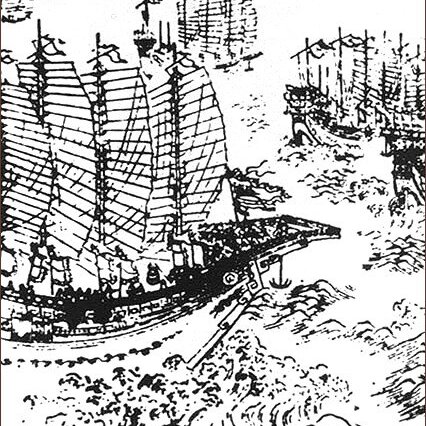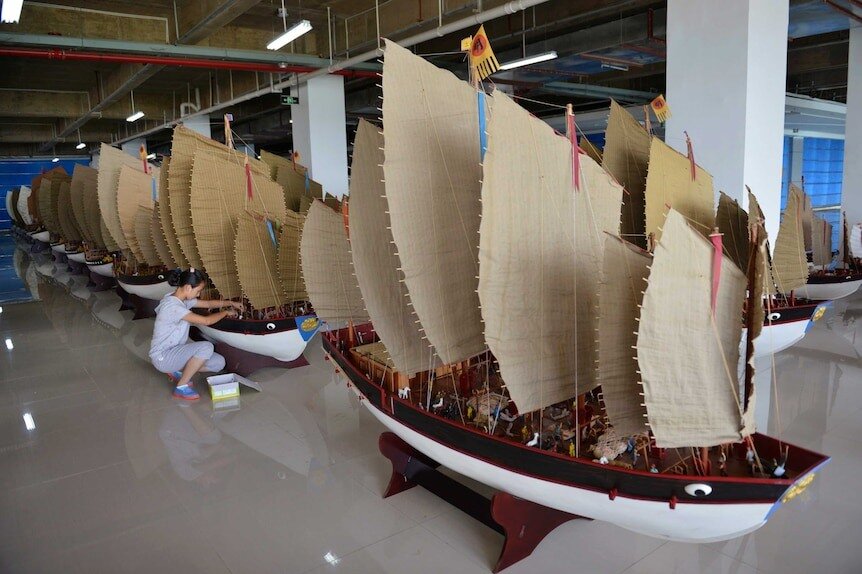Ma Huan

Ma Huan 馬歡 ﻣَﺎ ﺧُﻮًا (c. 1380, Kuaiji, Zhejiang Province, China –1460) [courtesy name Zongdao 宗道, pen name Mountain-woodcutter 會稽山樵] was a Chinese voyager and translator who accompanied Admiral Zheng He on three of his seven expeditions to the Western Oceans.
Like Zeng He (romanized Cheng Ho) — who was born as Ma He (馬和) to a Muslim family of Kunyang, Kunming, Yunnan –, Ma (Chinese diminutive of ‘Muhammad’) Huan was a Muslim born in the Kuaiji Commandery, an area within the modern borders of Shaoxing. He knew several Classical Chinese and Buddhist texts, and learned Arabic to be able to translate during his travels.
In the 1413 expedition (the 4th), he visited Champa, Java, Sumatra, Palembang, Siam, Kochi and Hormuz. In the 1421 expedition, he visited Malacca, Aru, Sumatra, Trincomalee, Ceylon, Kochi, Calicut, Zufar and Hormuz. In the 1431 expedition, he visited Bengal, Chittagong, Sonargaon, Gaur and Calicut.
It his assumed that he was among the emissaries sent to Mecca in 1432 – 1433 by Eununch Hong Bao — or by Zeng He himself, who also an eunuch at the court of Ch’eng-tsu (Yung-lo, the Yongle Emperor) — from Calicut, Kerala, India (now Khozikode). Funded in the 11th century, Calicut was then known as “the City of Spices”, and had been visited by the Arab voyager Ibn Battuta in the 1340s. Explorer Vasco de Gama was to visit the city in 1498.
Back to China, Ma Huan worked on his travel account with a travel companion, Kuo Chung-li, and the first edition (lost) of the Ying-yai Sheng-lan was published in 1451.
Main photo: A 17th engraving representing one of the “treasure ships” of Zeng He’s flotilla. The massive ships were often near 152 meter long, and 500 to 1,000 passengers could be onboard. Above: A reconstitution of the flotilla in Beijing (Reuters)

